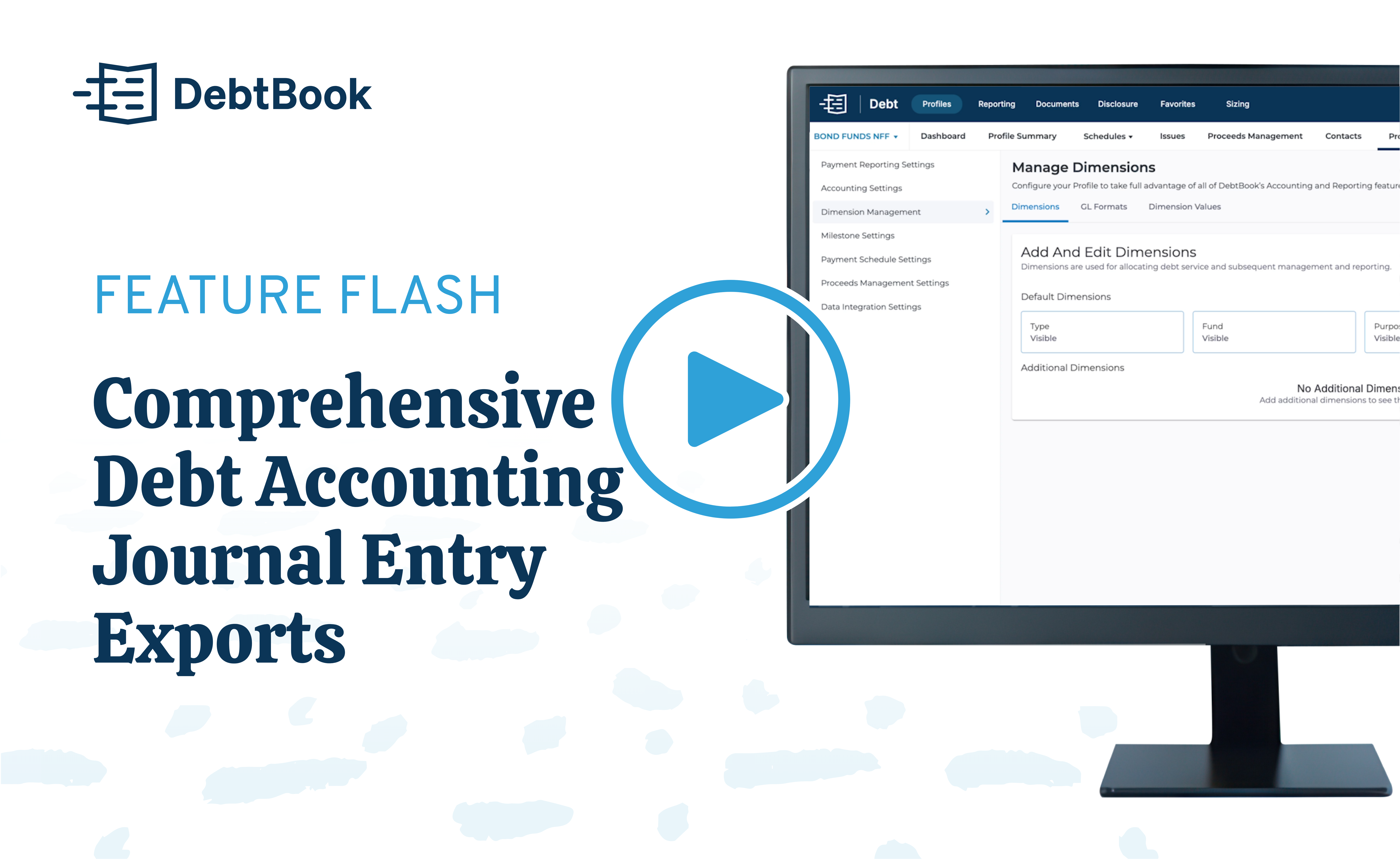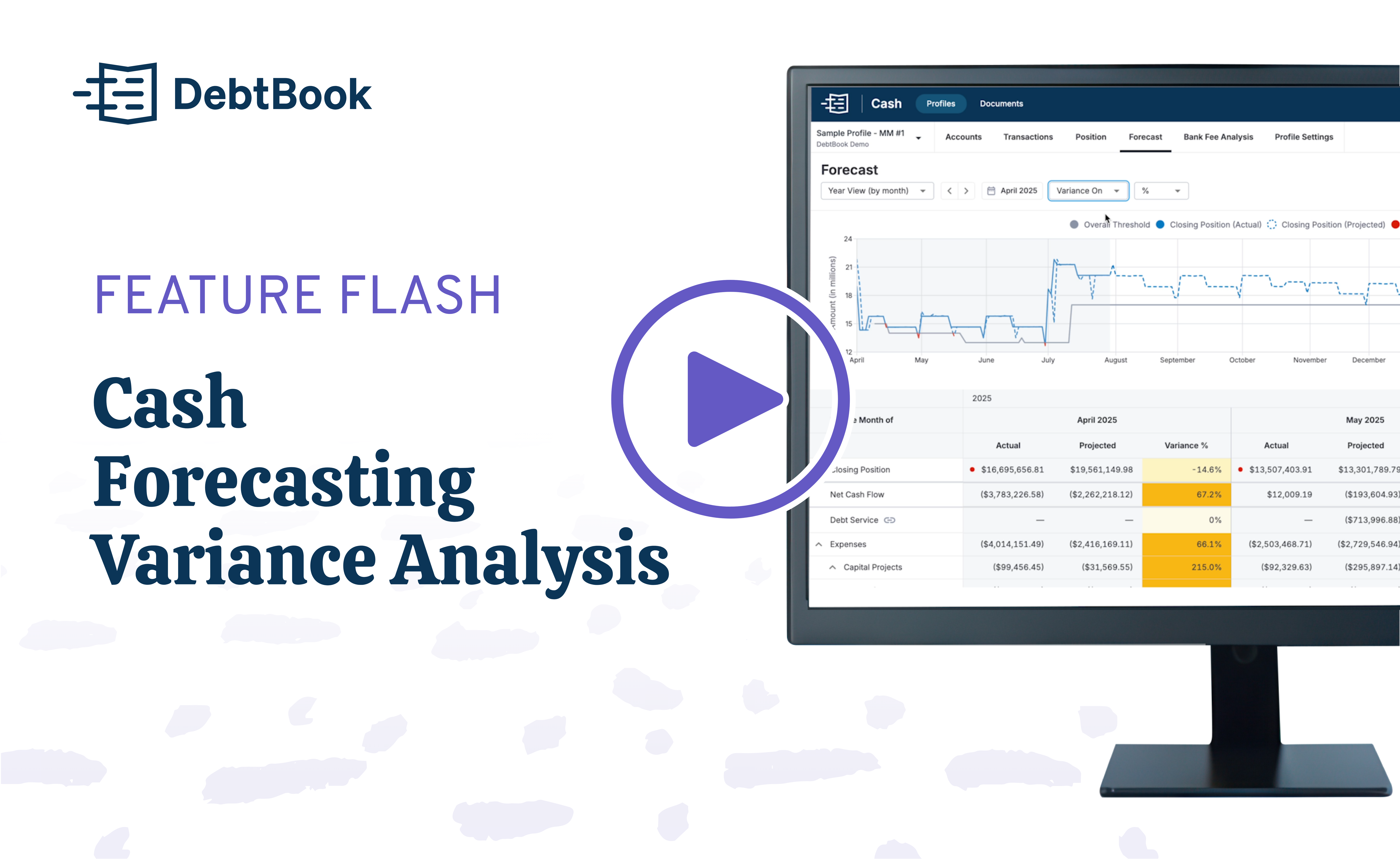Debt management is all about consistency and attention to detail. A finance team needs to be able to access reliable data on a regular basis in order to comply with the many disclosure and compliance requirements, remit payments, forecast accurately, and generally make smart, informed decisions.
Historically, spreadsheets have been largely the default for tackling the debt management process. The widespread use of this type of software should come as no surprise – it’s affordable, flexible, and easy to use.
But one thing we know is that tools like Excel were absolutely not created to be debt management software; we’re just making it work in the absence of something better – something specifically built to help finance teams manage their debt effectively.
At some point, waiting for the technology sector to develop the “something better” just wasn’t going to work. We needed to do it ourselves.
DebtBook recently hosted a panel discussion for the North Carolina Local Government Budget Association (NCLGBA) featuring several debt management experts. In the event, DebtBook co-founder and CEO Tyler Traudt provided a glimpse into how cloud-based technology can help organizations streamline debt management processes. Watch his presentation or read ahead.
Below are three immediate benefits that debt management software can bring to your financial team and governing bodies:
1. Create a single source of truth
Spreadsheets are a useful place for gathering and organizing data, but they aren’t always a good fit for multiple users or when using shared drives.
This challenge is often the case with debt management, where responsibilities are shared across various internal departments, accountants, advisors, lawyers, consultants, and bankers. With spreadsheets, users tend to download or copy files for offline purposes, which creates multiple versions to track and all with different information.
The outcome is often uncertainty around the accuracy of data and a duplication of efforts. When it comes time to audit, it can be difficult to determine who has the most current spreadsheet file, and errors may not be identified until something bad happens down the line– never fun. Further, with disparate data, all of the collaborators may not even be aware of any errors that arise.
In debt management, it’s especially important to keep everyone on the same page, since confusion can lead to bad disclosure, inaccurate audit reporting, missed or late payments or faulty projections.
Cloud-based tools ensure that your data is stored and accessible to appropriate parties – all in one central location.
Rather than hunt for the right file in the right folder, simply log on and access real-time data– anytime and anywhere. Data is backed up on the cloud automatically for extra peace of mind. Having this single source of truth for your data ensures everybody is on the same page and fully aligned, significantly reducing the likelihood of error and improving overall confidence in the data.
2. Increase collaboration
Once everyone is working with the same data, it’s much easier to align and work together. While accountants may use spreadsheets on an individual basis, cloud-based software opens up your data for collaboration across teams -- a must-have for long-term strategic planning or year end audit work.
This functionality comes in handy during times of turnover when information can be lost in the shuffle. With employee turnover as well as employees reaching retirement age, succession planning is critical, and technology can ease the friction during these challenging times. Because data is stored online, it’s easily accessible for new team members and shareable with external resources.
3. Improve efficiency
Debt service should run like clockwork. To that end, the more you can systemize and automate your work flows, the better a financial team can perform.
Manual updates and processes can be tiresome, and they aren’t always effective. Today, treasury management software is designed to provide seamless reminders and custom reports, so your team can focus on other more value-add activities. When you work with specialty software designed for debt management, you can automate manual tasks. User-friendly tools help teams get more done, so they can maintain true attention to detail and manage debt schedules with ease.
Think about the potential return to your organization here. If you can spend 10% less time on manual or repetitive tasks that drain your energy, you can reallocate that time (and effort) to more value-add activities, such as proactively managing your debt.
Or use that time to work with your advisors, lawyers and accountants and come up with creative ways to reduce the interest cost of your debt profile. The impact here will be measured in the hundreds of thousands and millions, and you’ll be the hero.
Disclaimer: DebtBook does not provide professional services or advice. DebtBook has prepared these materials for general informational and educational purposes, which means we have not tailored the information to your specific circumstances. Please consult your professional advisors before taking action based on any information in these materials. Any use of this information is solely at your own risk.







